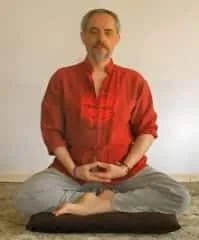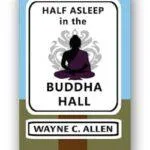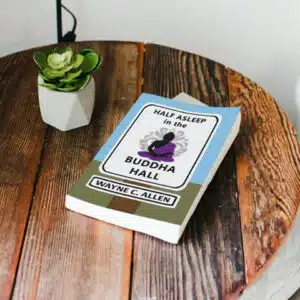Pay attention — to yourself — we do so to be present for what is going on, all without attachment to the stories we tell ourselves.

Want to learn more about living a full and meaningful life?
Want to have the best relationship ever?
Check out my books

The 4 Noble Truths
The Buddha’s first lecture concerned “waking up” from the illusion of suffering. The 4th “truth” was what is called the 8‑fold path.
Here’s one of them, as it applies to learning to pay attention.
Sound Awareness
I used to teach clients about paying attention by unpacking the the acronym NAIL (Notice, Accept, Investigate, and Let Go.)
And “noticing and accepting” is what Sound Awareness is all about.
Sound Awareness requires a single-minded focus on “just this.”
Prior to implementing Sound Understanding and Sound Conduct, our mental lives are non-present and non-responsible.
We only begin to discover this if we pay attention directly to our mind games, despite the “slippery wishes” of the mind. (slippery mind)

I’m so together, so clever, and such a Saint. Now do it my way!
For example, many of my clients worked on overcoming their blaming behaviours. They did this by noticing that they were angry or sad, and how this led them—immediately and automatically–to blame the nearest person.
The first move was to let go of blaming language. They learned to say, “I am angering myself.”
Good first step, but… it’s not so simple. We are hard-wired to point outward.
So they’d think (or say,) “If only I had married someone who was more centered and Zen-like. Then, my tranquility wouldn’t be disturbed.”
It was the same blame game but stated in an artificially more self responsible way.

# 1: It’s always, always about you
There is no escaping this reality. In the 4 Areas where we can pay attention, (mind, feeling, body, and phenomena) the workings of all are determined by how we choose to see them.
It is my responsibility to bring bare attention or bare noticing to each of the 4.
Slippery mind will get more and more clever, but all it ever says is, “Well, it may just be me messing with myself, but THIS time…”
Awareness requires that we look, with clear eyes, at our perception of the 4 areas.
- Immaturity is this: “This is happening (say, to my body) and it is bad, painful, wrong.”
- Maturity is this: “This is what is happening to my body.” All data, no “this is bad,” or “I’m disturbing myself over…”
What’s going on for you is what is going on for you. Watch. Notice.

# 2: You know nothing…
(…about anything outside of you)
This is the realm of phenomena from the 4 Areas. This is rejected strongly by our slippery mind. We cling to the belief that we know what’s up for others, and understand the workings of the world.
I find this quite odd, as most people I meet are woefully ignorant of their own internal theatre, and struggle mightily against shifting much at all of their view. But boy, do they know what’s up for others!
Here’s a hint: you know nothing about anything!
Sound Awareness teaches us tp pay attention to what’s going on. I call this bare awareness, or awareness stripped of judgement and interpretation.
I was asked the following question:
“In respect to good and bad, or the fact that it doesn’t exist, that all is neutral, it is a challenge. If I do not use judgement for things, would there not be chaos? I do not leave a 5 year old to look after themselves all day because my judgement tells me that would not be wise. If there is no good and bad, what about teaching our children values?”
I would ask, “What good does adding an additional layer do?
If I observe myself gently, I seen see that I “know” how I wish to deal with any phenomenon. Adding a layer of judgement just delays things.
We do not teach children values.
Wise people live their values, and children notice.
A friend’s son (9 years old or so) had cut a baseball apart (boy, did that bring back memories) and had wrapped the considerable internal yarn around his hand. The yarn was attached still to the rubber core. He asked his mom for a scissors.
She immediately leapt to the assumption that his hand was trapped in the yarn, and that he wanted out. She got right into, “We gotta get you out of there!” mode. I took out my knife, and opened it. He walked over to me, and sliced the yarn, freeing the rubber ball. The mom was like, “Oh!…”

# 3: Be curious
This would be the elegant approach to the last story. When in doubt, (which, really, is all the time) ask. When you want something, ask.
Sound Awareness is a dialogue between you and you, and you and the universe. As you begin to drop the “know-it-all” stance, it becomes clear that it’s all pretty vague and unclear out there.
And inside, too.
I recognize that every learning in my life has come right after admitting I had no clue. My therapist used to say, “Practice not knowing.”
Curiosity as opposed to stubbornness was the key to opening the door.
Curiosity is a bit like childlike wonder.
I loved the look on that kid’s face as he wrapped yarn around his hand and bounced the inside of the baseball around. This was his very first experience with the guts of a ball, and I twigged back to when I’d done the same thing. I told him about some of my experiences, and wished him well with the exploration.
Curiosity allows me to deeply engage with the phenomena I am viewing. The Buddha used the term samadhi to describe this laser-like focus on what is “right there.” He indicted that such attention leads to delight and ease born of detached curiosity.

# 4: detach
Detachment is not the same as not caring. Detachment is about dropping clinging. To what, you ask?
See above! It’s dropping our attachment to our stories, our judgements, our blaming, and to our mind games.
Once I have detached myself from them, and also from attaching to a particular outcome, I can be fully and completely present with this moment.
This is not the same as not caring. It’s not walking around in a calm, preternatural fog. It’s paired with “delight,” remember. It’s all about complete, vital presence as one enacts and interacts with life.
Sound Awareness requires laser-like presence, without clinging to anything. This is difficult, as most people are deeply attached to their pain and drama, and also deeply attached to the idea that the cosmos should cooperate in a “make me happy project.”
Silly people want the world and others to give a shit,
and are deeply annoyed that it and others don’t.
So, detach. Let It Be, to quote a Beatles album. It is as it is, until it isn’t.
This is also not to say that goals, projects, desires have no place. Remember, the real cause of suffering is clinging, not desire per se.
The way this plays out is to do whatever you do with full attention and full involvement, while detaching from a specific outcome (the clinging part.)

#5: Sound Concentration
The word the Buddha used is dhyana, which is the precursor to the word Zen.
And the essence of Zen is shikantaza, a term coined by Dogen, the founder of the Soto school of Zen.
The word shikantaza translates, ““nothing but (shikan) precisely (ta) sitting (za).”
Sound Concentration is what happens when we are able to simply be present, moment-by-moment, with what is, and what arises. It happens as we learn to sit with ourselves and let go of the clinging and the games.
As I’ve said before, the way to strengthen presence is to practice shikantaza.



 Check out my book,
Check out my book,